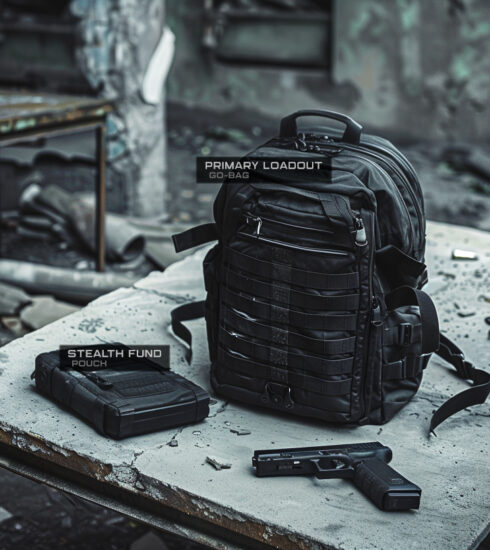Terminal Ballistics: 101 Guide
Terminal ballistics, the study of a projectile’s behavior upon impact with its target, is an essential facet of ballistic science.
This branch is crucial for the design and application of various munitions in both offensive and defensive contexts, guiding operatives in the selection of appropriate ammunition based on their specific mission parameters.
Additionally, its principles are integral to the development of personal protective equipment and for forensic experts in crime scene investigations. An operative’s grasp of terminal ballistics can mean the difference between mission success and failure, making it a topic of significant importance for training and operational planning.
Terminal ballistics, often referred to as the study of the behavior and effects of a projectile when it hits its target, is a critical field of expertise for ballistics experts and weapons specialists. It forms the final phase of a projectile’s flight, which starts with internal ballistics (the projectile’s behavior within the weapon) and is followed by intermediate ballistics (the projectile’s behavior as it leaves the barrel) and external ballistics (the projectile’s path to the target).
Understanding terminal ballistics is paramount for the design of both defensive and offensive materials, including the development of body armor and the effectiveness of firearm projectiles.
Projectile Design and Terminal Effectiveness
The design of a projectile greatly influences its terminal behavior. Variables such as shape, composition, and mass have a direct impact on the penetration, expansion, and fragmentation of the round upon impact.
A projectile designed for maximum penetration, such as a full metal jacket (FMJ) bullet, may have a significantly different terminal effect compared to one designed to expand or fragment, like a hollow-point round. The desired outcome — be it to incapacitate, neutralize, or achieve the greatest stopping power without over-penetration — guides the choice of ammunition in operational scenarios.
Therefore, operatives must choose their gear with a clear understanding of the mission-specific terminal ballistics involved.
The Dynamics of Impact
Upon impact, the kinetic energy of the projectile is transferred to the target. This transfer is what causes damage, and it’s influenced by a variety of factors including velocity, angle of impact, and target material. High-velocity projectiles will usually result in greater energy transfer and thus more potential for damage.
However, this is also tempered by the phenomenon of over-penetration, where a projectile may pass through a soft target without transferring all of its energy, thereby reducing its effectiveness. The ability of a bullet to upset—change direction, deform, or fragment—upon entering tissue or other mediums is a vital aspect of terminal ballistics.
Terminal Ballistics in Defensive Operations
In defensive operations, terminal ballistics plays a role in determining the optimal construction and materials for body armor and bullet-resistant glass. Understanding the terminal behavior of different projectiles ensures that armor is designed to mitigate the energy transfer and reduce the likelihood of blunt force trauma or penetration.
Ballistic testing, which includes shooting armor with various rounds to test its efficacy, is a method used to verify the real-world applicability of these defensive measures.
This same understanding aids in the formulation of operational protocols that prioritize the safety of operatives in the field, ensuring they are adequately prepared for the threats they may encounter.
Terminal Ballistics and Its Forensic Application
Forensics utilizes terminal ballistics to help explain and recreate shooting incidents. Analysis of bullet damage, trajectory, and residual effects on the target can reveal the type of weapon and ammunition used, the distance of the shooter from the target, and other details that can be crucial in criminal investigations.
This application requires meticulous attention to the principles of terminal ballistics, as each mark, fragment, and wound channel tells a part of the story. For the covert operative, knowledge of these principles aids not only in the execution of their duties but also in ensuring operations remain clandestine, as forensic evidence can often lead to compromised operational integrity if not managed correctly.
In conclusion, terminal ballistics provides essential insights into the consequences of a projectile’s impact, shaping the strategic choices of weaponry and defense measures. Whether for maximizing the stopping power of a bullet, designing body armor, or reconstructing a shooting scene, an understanding of terminal ballistics is indispensable.
For the covert operative, mastery of this knowledge equips them with the predictive ability to choose the right munition for a given task and to anticipate the outcomes of their actions in the field. Moreover, in forensics, the application of terminal ballistics is key in unwinding the narrative of a projectile’s lethal journey, offering critical intelligence in both criminal justice and covert operations.
Hence, the serious study of terminal ballistics is not only a responsibility for those in the field of arms and armaments but a broader imperative for security, law enforcement, and intelligence communities worldwide.
[INTEL : The ‘Firearm Staging’ Concept, The Navy SEALs Standard Issue Handgun: Glock 19]







